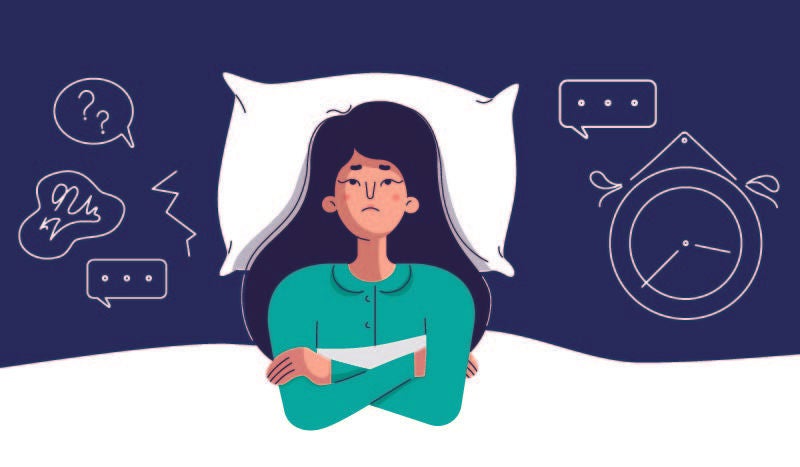
Did you know that you spend about a third of your life sleeping? Although you may seem to be doing nothing, it is an important time for your brain as it works hard to maintain various functions in your body. Associate Professor Pavanni Ratnagopal, Senior Consultant, Department of Neurology, NNI explains more.
Sometimes, a good night’s rest is all you need to feel ready to seize the day. It is no wonder – sleep is essential. During deep sleep, your brain and body are repairing, improving your mental and physical health, and ultimately, quality of life.
In contrast, lack of sleep affects your thinking, memory, concentration, alertness and mood. If left untreated, long term sleep disturbances can decrease your quality of life, lead to various diseases and as a result, even death.
Stages of sleep
There are four stages in the sleep cycle. The first three stages are non-rapid eye movement (REM) sleep and the last is REM sleep. You go through about four to six cycles of sleep each night.
Sleep stage 1 - NREM (N1)
- Light sleep
- Easily woken up during this stage
- May sometimes feel like you are falling and become startled (hypnic jerk)
Sleep stage 2 - NREM (N2)
- Body relaxes, breathing, heart rate and brain activity slow down
- Body prepares to enter deep sleep
- A person usually spends about half their time in this stage
Sleep stage 3 - NREM (N3)
- Deep sleep
- Body relaxes even further
- If woken up at this stage, you may feel disoriented for a few minutes
Sleep stage 4 - REM
- Brain activity increases
- Breathing, heart rate and blood pressure increase
- Rapid eye movement
- Muscles become temporarily paralysed (atonia) except for those controlling the eyes and breathing
- Vivid dreams (dreaming can occur at any stage, but is less common and vivid in the NREM stages)
Three common sleep disorders causing sleepiness
Sleep disorders are any type of condition that disrupts sleep. This in turn causes daytime sleepiness and affects quality of life. A person may have a sleep disorder if they tend to yawn frequently, have difficulty waking, nap frequently and/or experience headaches or giddiness that are not due to another condition.
If you suspect you have a sleep disorder, do see a doctor for an evaluation and appropriate treatment.
1. Sleep deprivation
Singaporeans are some of the most sleep-deprived people in the world. In a 2014 survey, Singapore ranked third, getting an average of six and a half hours of sleep a night, falling short of the recommended seven to nine hours for adults.
Sleep deprivation is usually caused by lifestyle factors, for example:
- Choosing not to sleep to watch a midnight show.
- Heavy work commitments and stress that hinder sleep.
- Sleeping and staying awake at odd hours due to shift work.
Certain medical conditions can also lead to sleeplessness:
- Chronic pains and aches that disturb sleep.
- Other sleep disorders that disrupt the normal sleeping pattern like obstructive sleep apnoea and restless leg syndrome.
- Nasal obstruction (blocked nose) can result in difficulty falling asleep.
For more on sleep deprivation, click here.
2. Obstructive sleep apnoea
Obstructive Sleep Apnoea (OSA) is a condition where breathing repeatedly stops and starts when the person is sleeping due to throat muscles relaxing. Common signs of OSA include:
- Loud, frequent snoring
- Stop in breathing or gasping for air during sleep
- Excessive daytime sleepiness
- Frequent urination at night
If OSA is left untreated, it can increase the risks of serious health complications such as memory loss, stroke, high blood pressure, diabetes, depression, heart failure and heart attacks. However, there are effective ways to manage this condition such as the use of a continuous positive airway pressure (CPAP) machine when sleeping, an oral appliance or surgery.
For more on sleep apnoea, click here.
3. Sleep movements
Sleep-related movement disorders are conditions where repetitive movements affect a person’s sleep. The most common type of sleep-related movement disorder is Periodic Limb Movements in Sleep (PLMS), where involuntary twitching or jerking of the legs occurs during sleep.
As the person does not feel a conscious urge to move their limbs and may not be woken up in mild cases, they may be unaware of their symptoms. However, the person’s bed partner may complain of being kicked.
PLMS can be triggered by certain conditions like iron deficiency, hyperthyroidism, osteoporosis and certain drugs. Try simple measures like drinking a cup of hot Milo or milk, eating dark chocolate or honey to help you relax before sleep. If these fail, then medication can be prescribed.
Other sleep movement disorders include bruxism (clenching or grinding of teeth during sleep), neck myoclonus (sudden jerks of the neck when drowsy or trying to fall asleep), leg cramps and hypnic jerks.
For more on PLMS, click here.
This article was published in the National Neuroscience Institute's NeusLink magazine, which covers articles about NNI updates and brain, spine, muscle and nerve conditions in English and Chinese - to read more articles, click here!













 Get it on Google Play
Get it on Google Play